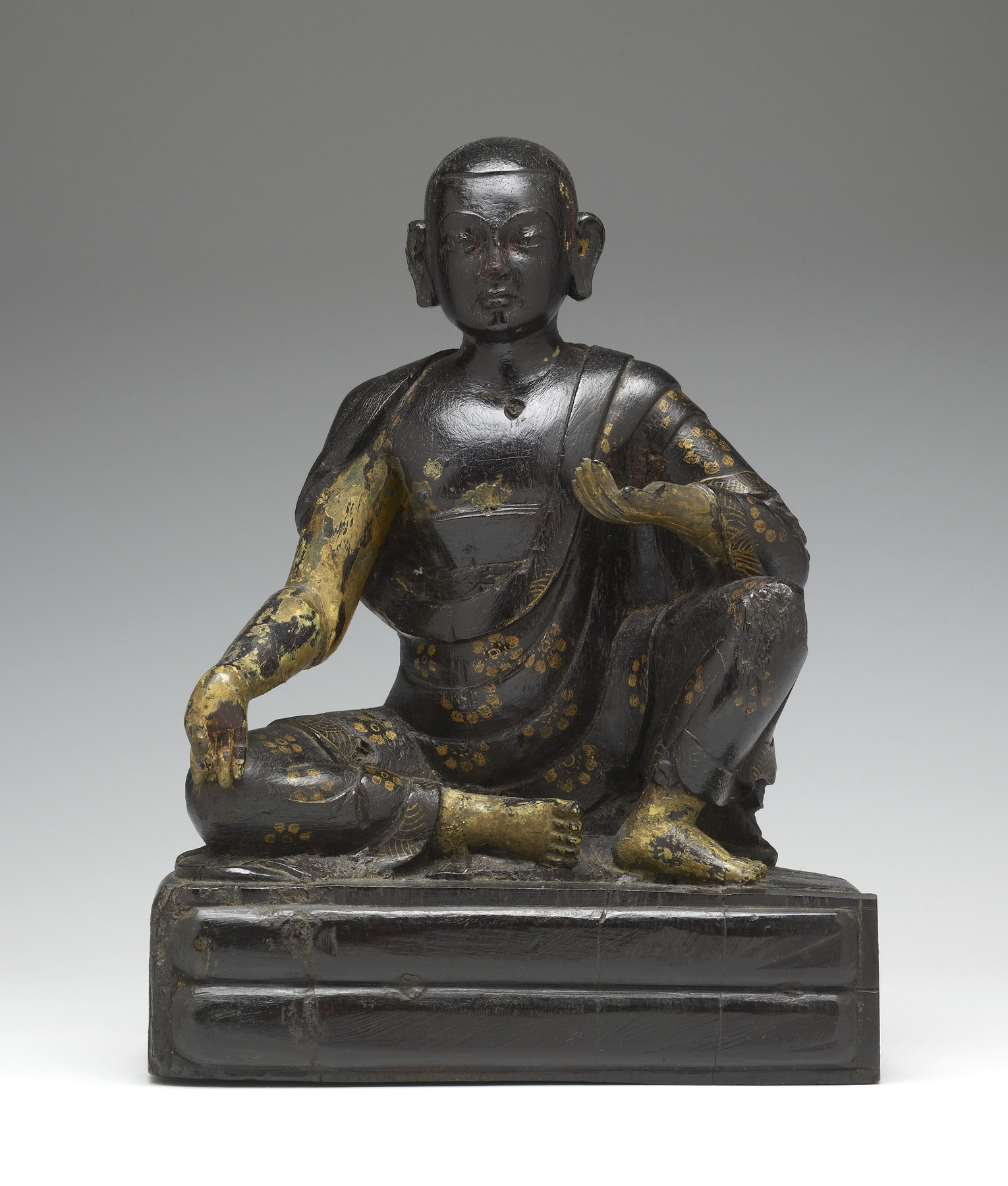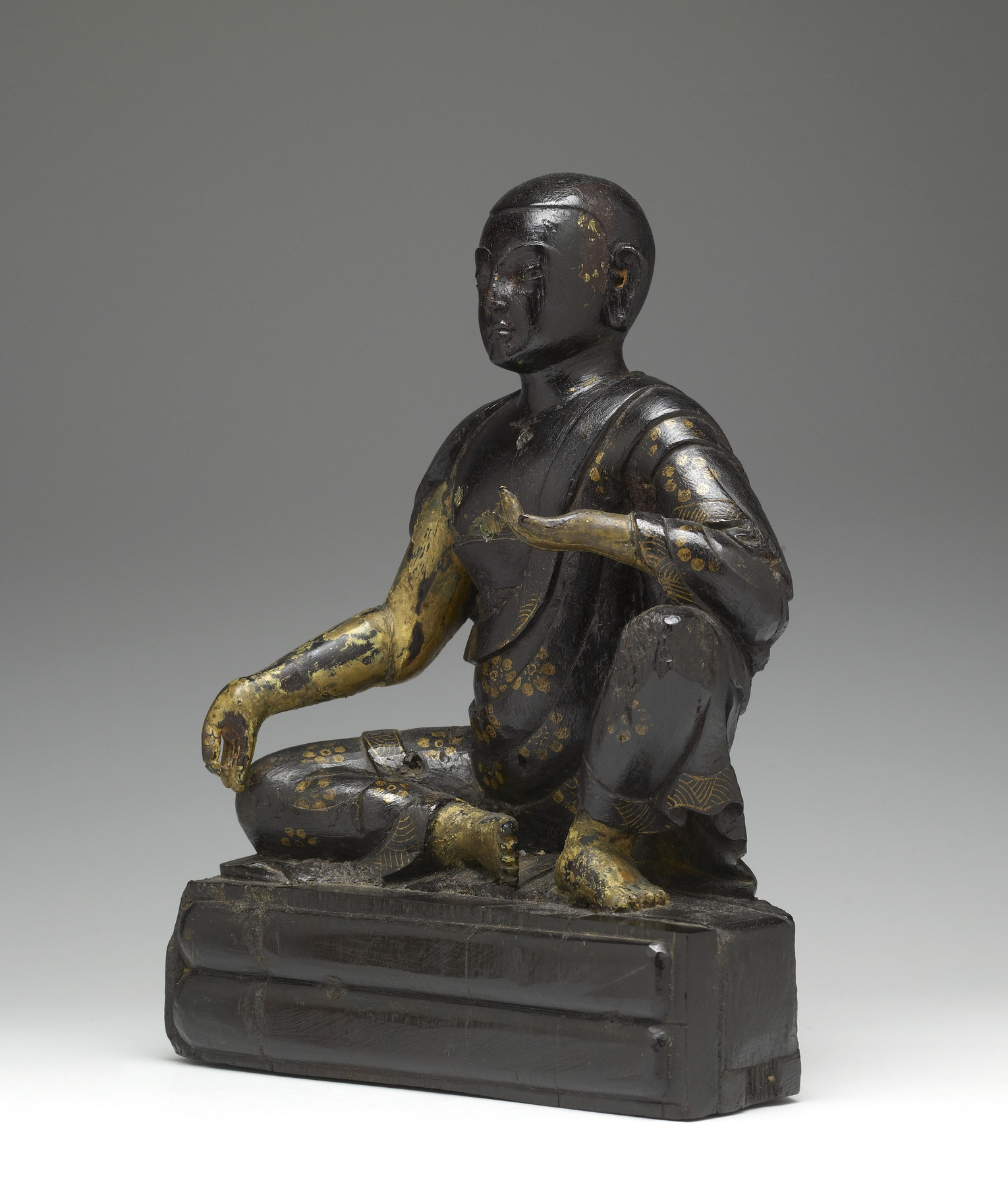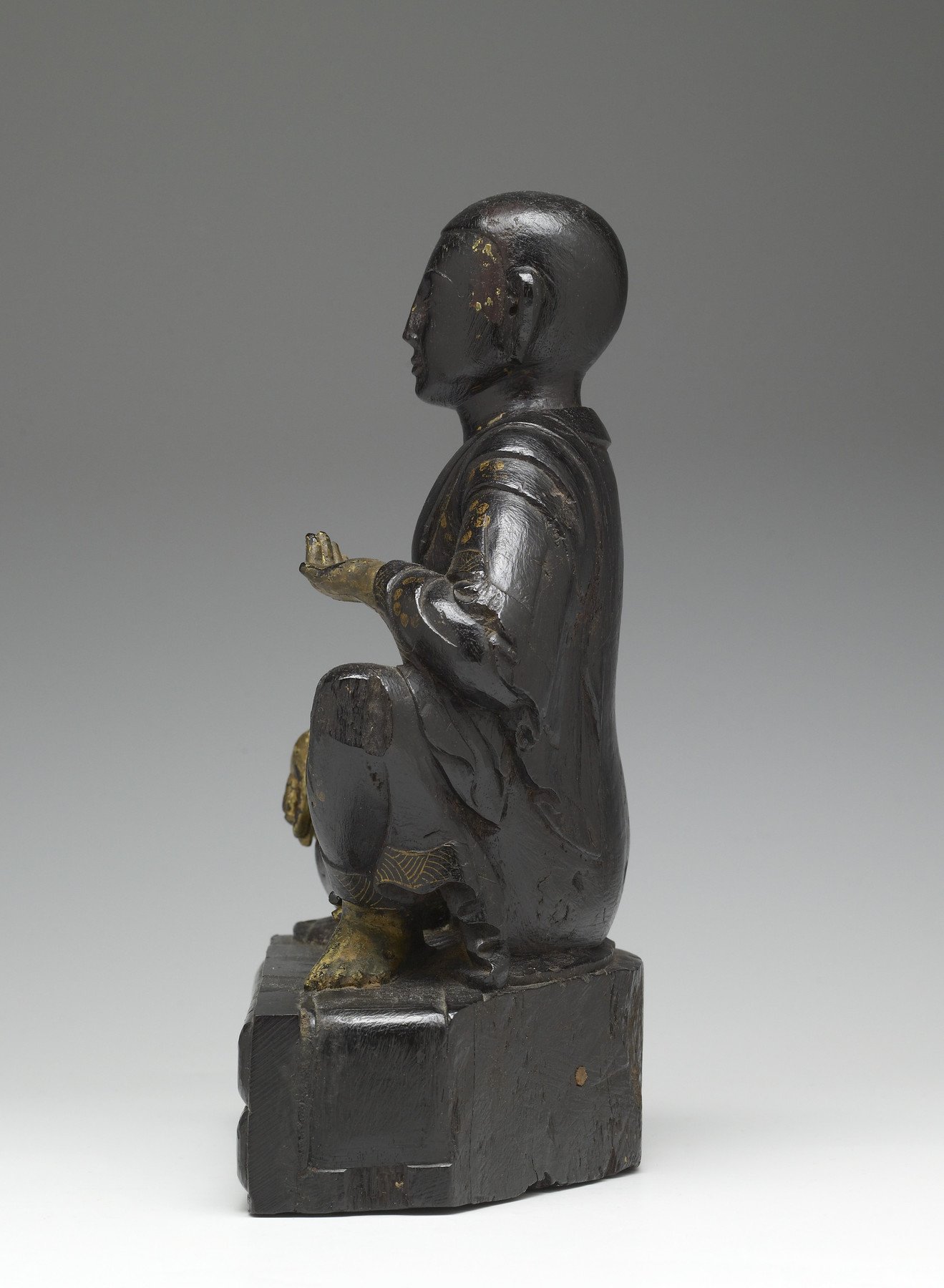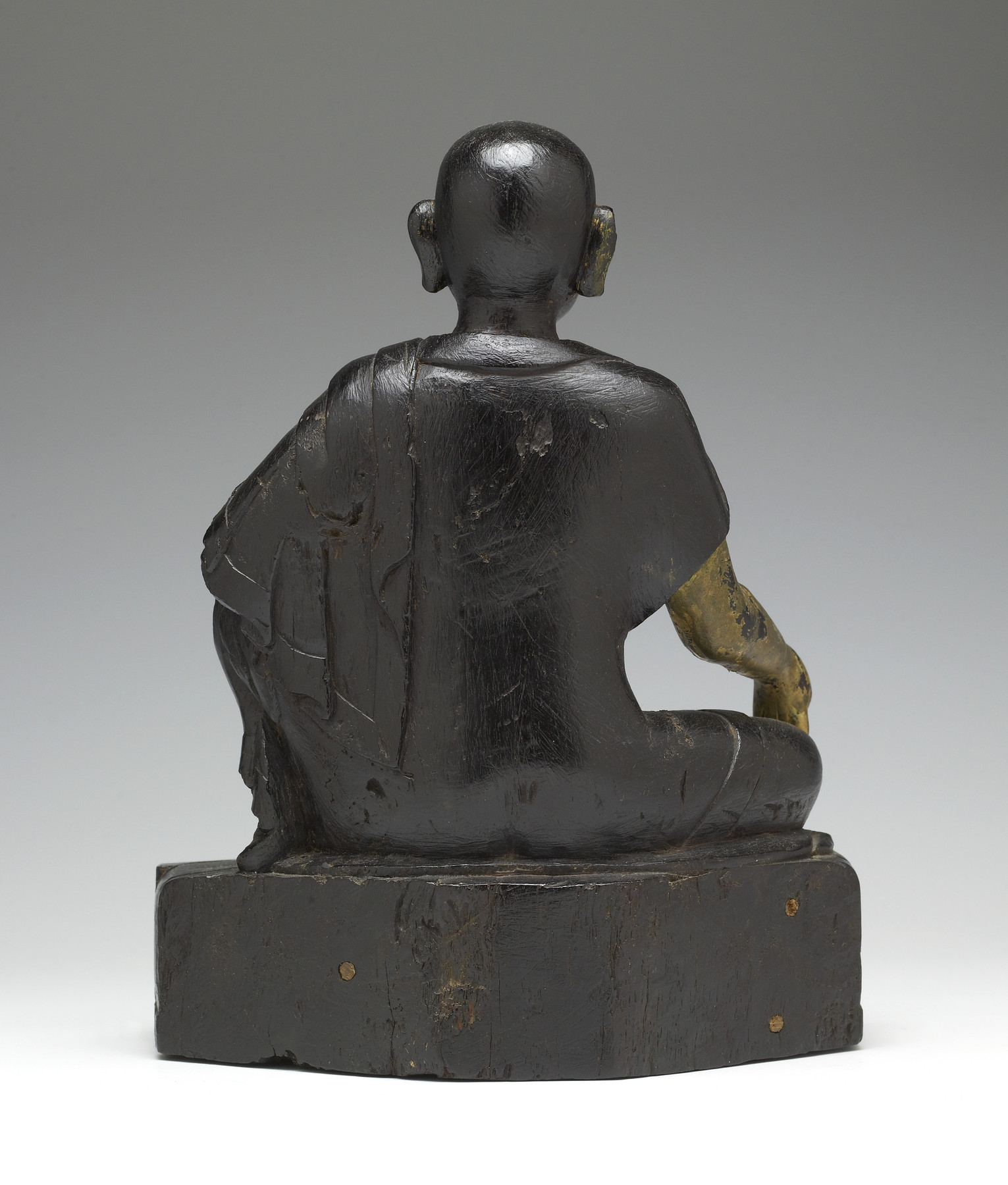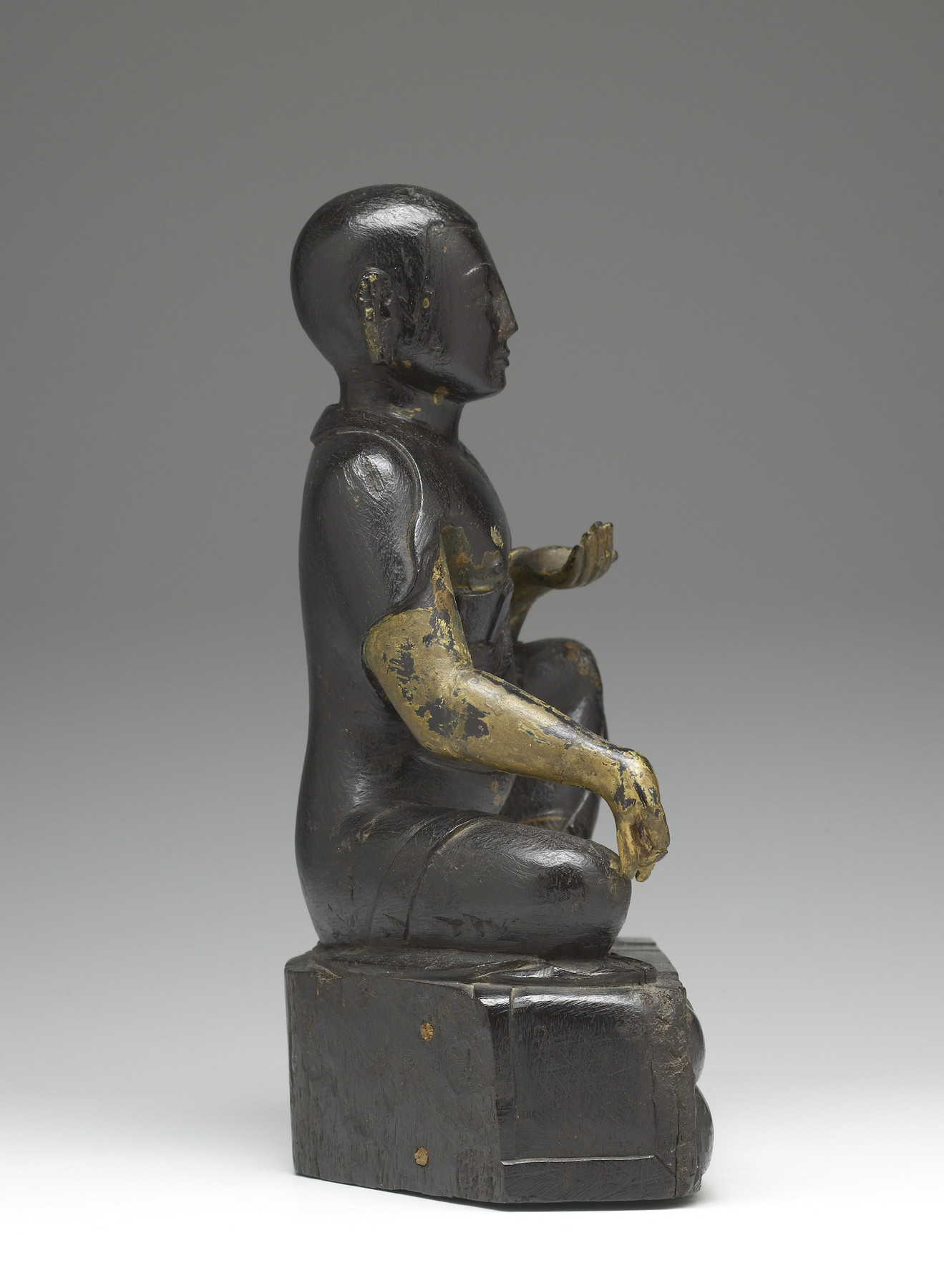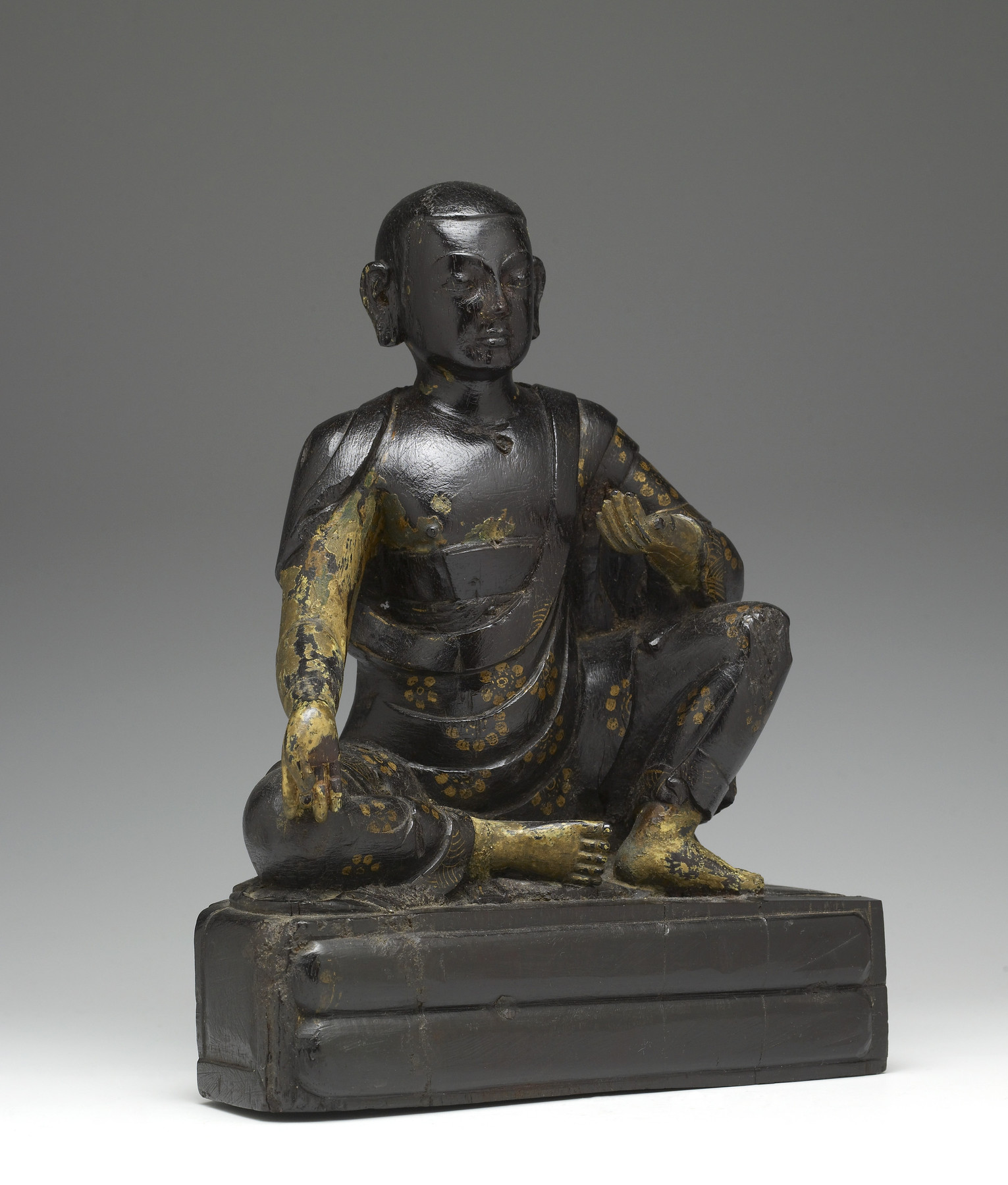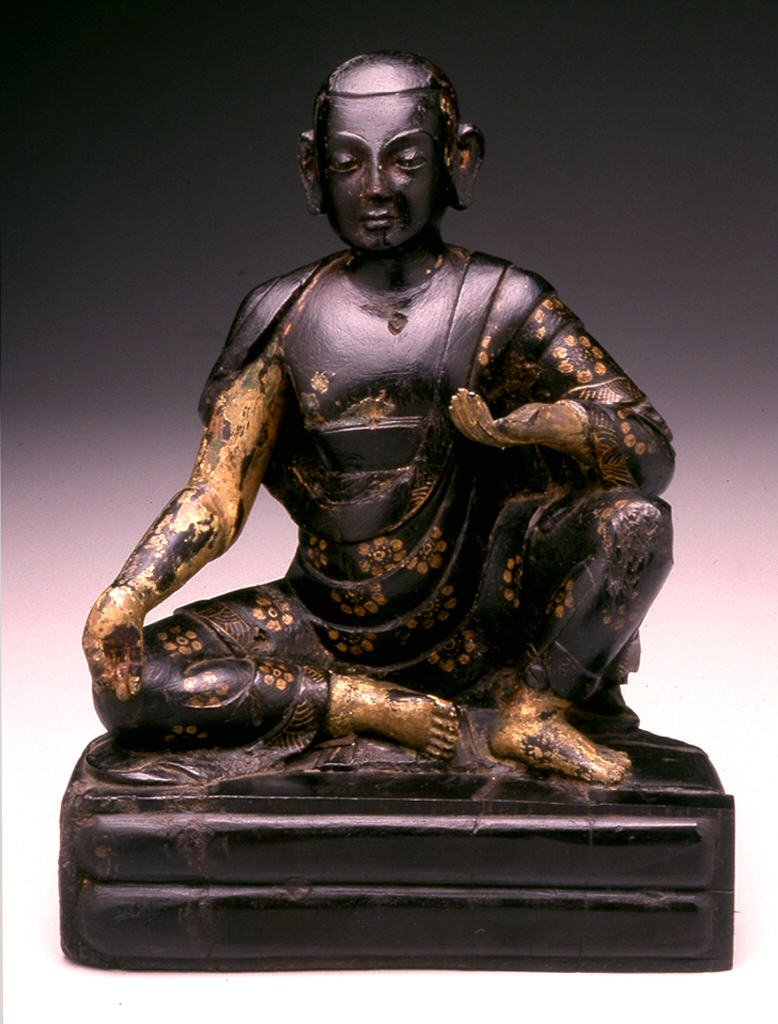Buddhist Monk
(India, Nepal, and Tibet)
Clad in a monk's traditional garments, the figure sits gracefully, with left leg bent vertically and right placed horizontally on the base, which may be a seat with two cushions. His left hand is raised to his chest with the palm open, as if it once held an object. The right arm extends to the knee, and the hand forms a ritual gesture, in which the thumb and middle finger form a circle.
Without an inscription or more specific attributes, it is not possible to identify the figure precisely. His robe, printed with stylized floral and wave motifs, provides no clue. It is possible, however, that he represents not just any monk but an arhat, in which case, the sculpture would be part of a set. Usually in portraits of monks the features are more individualized, whereas here not only are they idealized, but the model seems to have been Indian rather than Tibetan. He may also represent one of the four great Kashyapas of the Buddhist tradition. Even if he remains unidentified, the representation remains a handsome example of a figural sculpture in wood, a common material for structures, but not for sculpture.
Provenance
Provenance (from the French provenir, 'to come from/forth') is the chronology of the ownership, custody, or location of a historical object.
Spink & Sons, London; purchased by John and Berthe Ford, Baltimore, September 1982.
Exhibitions
| 2001-2003 | Desire and Devotion: Art from India, Nepal, and Tibet in the John and Berthe Ford Collection. The Walters Art Museum, Baltimore; Santa Barbara Museum of Art, Santa Barbara; Albuquerque Museum, Albuquerque; Birmingham Museum of Art, Birmingham; Hong Kong Museum of Art, Hong Kong. |
Geographies
Tibet (Place of Origin)
Measurements
H: 9 3/16 × W: 7 1/16 × D: 3 5/8 in. (23.3 × 18 × 9.2 cm)
Credit Line
Gift of John and Berthe Ford, 2013
Accession Number
In libraries, galleries, museums, and archives, an accession number is a unique identifier assigned to each object in the collection.
In libraries, galleries, museums, and archives, an accession number is a unique identifier assigned to each object in the collection.
61.360

